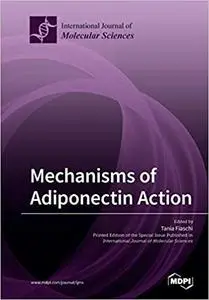Tania Fiaschi, "Mechanisms of Adiponectin Action"
English | ISBN: 3039212451 | 2019 | 222 pages | PDF | 10 MB
English | ISBN: 3039212451 | 2019 | 222 pages | PDF | 10 MB
The adipokine adiponectin is very concentrated in plasma, and decreased levels of adiponectin are associated with pathological conditions such as obesity, diabetes, cardiovascular diseases, and metabolic syndrome. When produced in its full-length form, adiponectin self-associates to generate multimeric complexes. The full-length form of adiponectin can be cleaved by the globular form of elastase that is produced locally, and the resulting biological effects are exerted in a paracrine or autocrine manner. The different forms of adiponectin bind to specific receptors consisting of two G-protein-independent, seven-transmembrane-spanning receptors, called AdipoR1 and AdipoR2, while T-cadherin has been identified as a potential receptor for high molecular weight complexes of adiponectin. Adiponectin exerts a key role in cellular metabolism, regulating glucose levels as well as fatty acid breakdown. However, its biological effects are heterogeneous, involving multiple target tissues. The Special Issue "Mechanisms of Adiponectin Action" highlights the pleiotropic role of this hormone through 3 research articles and 7 reviews. These papers focus on the recent knowledge regarding adiponectin in different target tissues, both in healthy and in diseased conditions.
Read more



